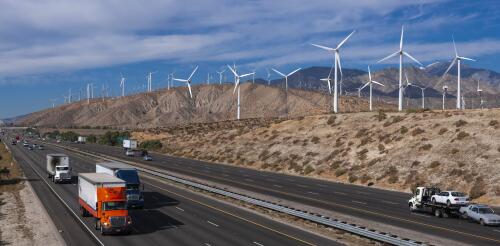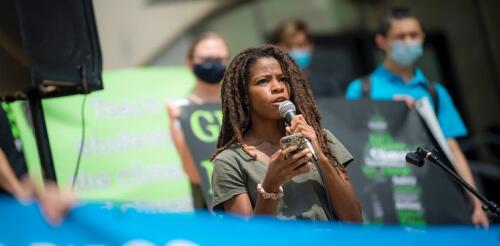Fossil fuels
Leer en español. You’ve probably seen ads promoting gas and oil companies as the solutions to climate change. They’re meant to be inspiring and hopeful, with scenes of a green, clean future. But shiny ads are not all these companies do to protect their commercial interests in the face of a rapidly heating world. Most also provide financial support to industry groups that are spending hundreds of millions of dollars on political activities, often to thwart polices designed to slow climate change. For example, The New York Times recently reported on the Propane Education and Research Council’s attempts to derail efforts to electrify homes and buildings in New York, in part by committing nearly US$900,000 to the New York Propane Gas Association, which flooded social media with misleading information about energy-efficient heat pumps. The American Fuel and Petrochemical Manufacturers, which represents oil refiners and petrochemical firms, has spent millions...
Lire cet article en français Los Angeles had oil wells pumping in its neighborhoods when Hollywood was in its infancy, and thousands of active wells still dot the city. These wells can emit toxic chemicals such as benzene and other irritants into the air, often just feet from homes, schools and parks. But now, after nearly a decade of community organizing and studies demonstrating the adverse health impacts on people living nearby, Los Angeles’ long history with urban drilling is nearing an end. In a unanimous vote on Jan. 24, 2023, the Los Angeles County Board of Supervisors voted to ban new oil and gas extraction and phase out existing operations. It followed a similar vote by the Los Angeles City Council a month earlier. The city set a 20-year phaseout period, while the county has yet to set a timetable. As environmental health researchers, we study the impacts of oil drilling on surrounding communities. Our research shows that people living near these urban oil...
California is embarking on an audacious new climate plan that aims to eliminate the state’s greenhouse gas footprint by 2045, and in the process, slash emissions far beyond its borders. The blueprint calls for massive transformations in industry, energy and transportation, as well as changes in institutions and human behaviors. These transformations won’t be easy. Two years of developing the plan have exposed myriad challenges and tensions, including environmental justice, affordability and local rule. For example, the San Francisco Fire Commission had prohibited batteries with more than 20 kilowatt-hours of power storage in homes, severely limiting the ability to store solar electricity from rooftop solar panels for all those times when the sun isn’t shining. More broadly, local opposition to new transmission lines, large-scale solar and wind facilities, substations for truck charging, and oil refinery conversions to produce renewable diesel will slow the tran...
Global warming has increased the number of extreme weather events around the world by 400% since the 1980s. Countries know how to stop the damage from worsening: stop burning fossil fuels and shift to renewable energy, electrify transportation and industry, and reduce the carbon intensity of agriculture. But none of this is happening fast enough to avoid warming on a catastrophic scale. In my new book, “The Climate Crisis,” I lay out the mechanisms and impacts of the climate crisis and the reasons behind the lack of serious effort to combat it. One powerful reason is the influence that the fossil fuel industry, electric utilities and others with a vested interest in fossil fuels have over policymakers. But there’s another reason for this inaction that everyone has the ability to change: response skepticism – the public doesn’t believe in its own political power enough or use it. When people speak up and work together, they can spur powerful chan...
The world could still, theoretically, meet its goal of keeping global warming under 1.5 degrees Celsius, a level many scientists consider a dangerous threshold. Realistically, that’s unlikely to happen. Part of the problem was evident at COP27, the United Nations climate conference in Egypt. While nations’ climate negotiators were successfully fighting to “keep 1.5 alive” as the global goal in the official agreement, reached Nov. 20, 2022, some of their countries were negotiating new fossil fuel deals, driven in part by the global energy crisis. Any expansion of fossil fuels – the primary driver of climate change – makes keeping warming under 1.5 C (2.7 Fahrenheit) compared to pre-industrial times much harder. Attempts at the climate talks to get all countries to agree to phase out coal, oil, natural gas and all fossil fuel subsidies failed. And countries have done little to strengthen their commitments to cut greenhouse gas emissions in the...




